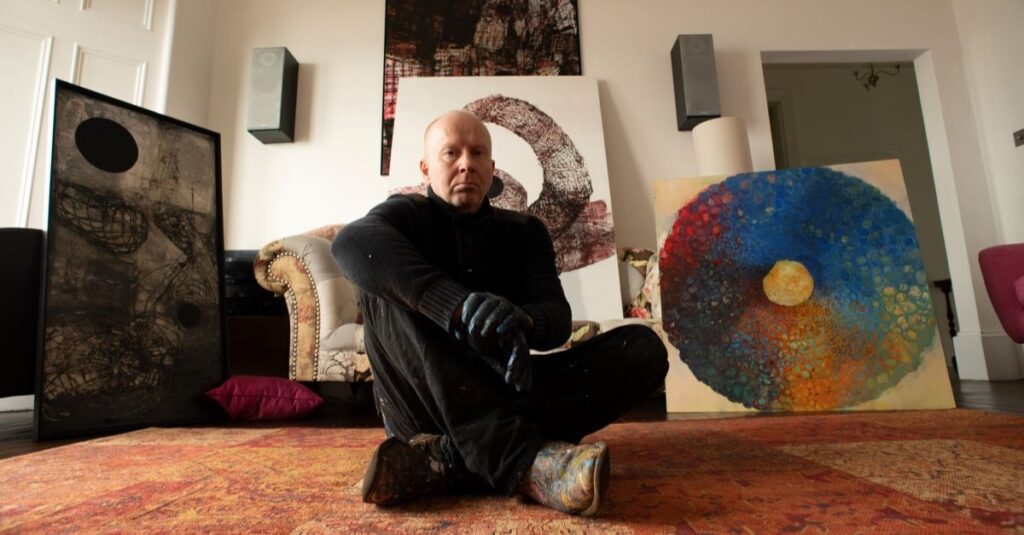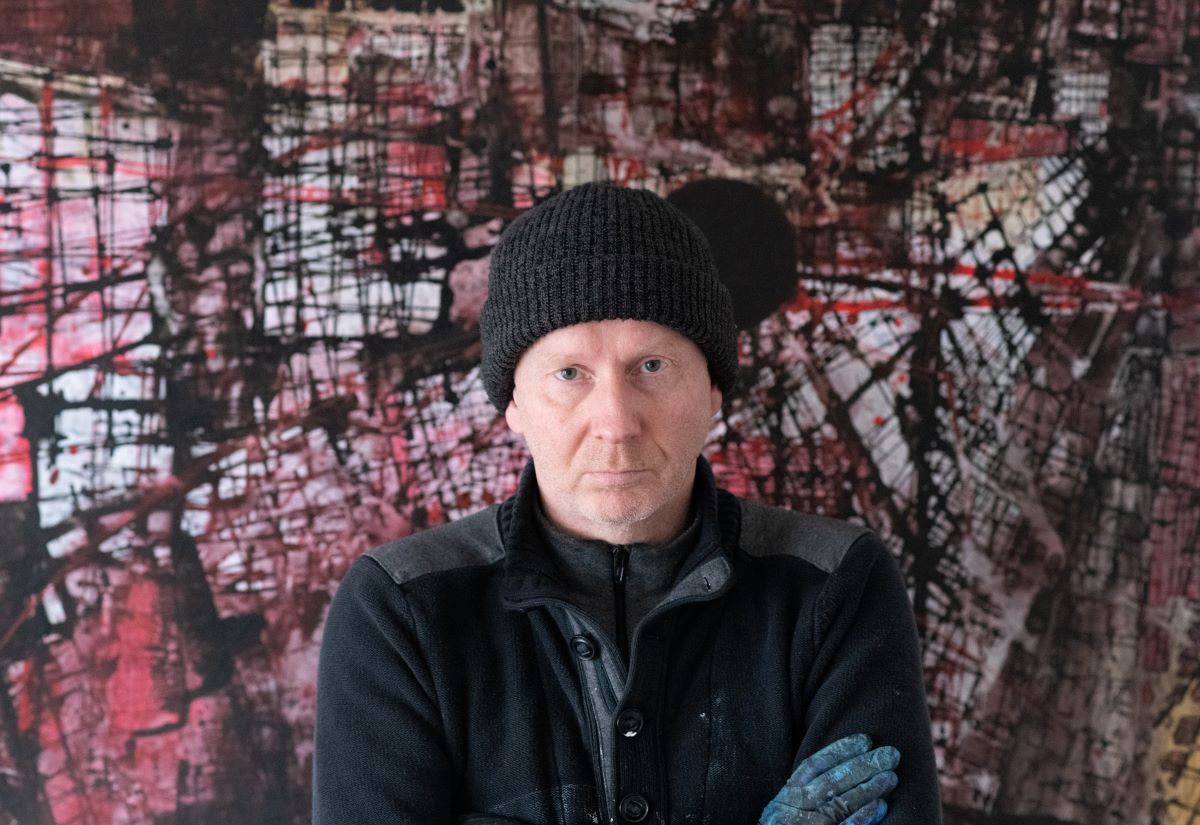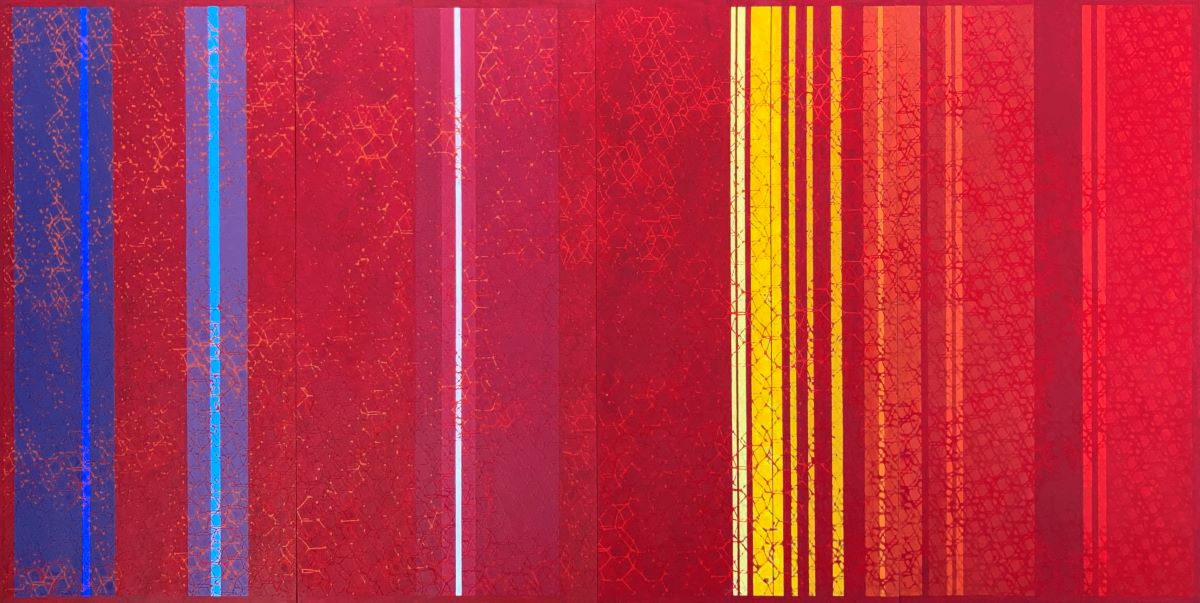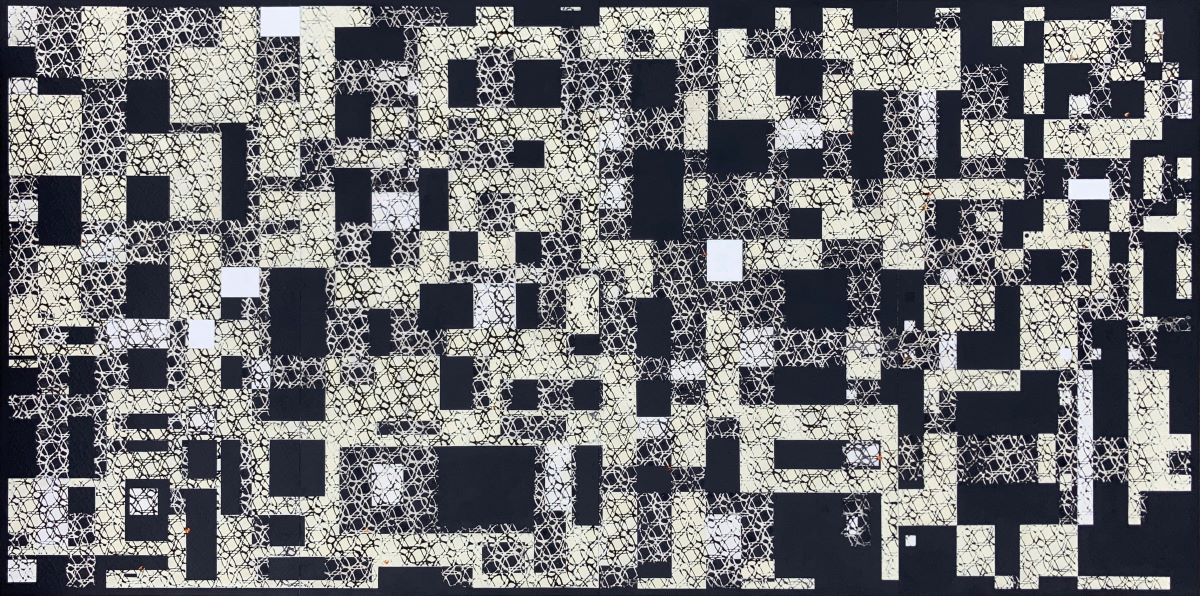
A brush with science: Artist Gregor Harvie to create dramatic paintings to celebrate physicist Lord Kelvin
Scottish artist Gregor Harvie has created two dramatic paintings to celebrate the work of renowned physicist Lord Kelvin.
The Quantum Theory Group at the University of Glasgow, where Kelvin was a professor, commissioned the work as part of celebrations for the 200th anniversary of his birth.
Kelvin was an eminent mathematical physicist and engineer and was the professor of Natural Philosophy at the University for 53 years.
He is most famous for developing the international system of absolute temperature that bears his name.
Artist Gregor has used computer modelling to construct thousands of ‘Kelvin cells’, creating an intricate lattice that is the basis of two huge paintings representing the light and dark universe.
‘For me, the collaboration has been an immense privilege,’ Gregor said.
‘As an artist I’m fascinated by physics, and working with the Quantum Theory Group has allowed me to fully embrace the subject, developing ideas which I then explore in my work.
‘It has given me the chance to experience physics from the inside and to engage with some of the sharpest scientific minds.
‘I also try to contribute to the subject myself, by asking what if questions and imagining new possibilities.

Gregor Harvie. Credit: Chris Wallace.
‘There is more common ground between science and art than you might think.
‘There has always been a relationship between art and science. They draw on the same cultural and environmental knowledge and have often explored similar ideas.
‘Both are a search for patterns, for things that are recognisable and repeatable, and ultimately, progress in either requires a leap of the imagination.’
Art and science intertwined
Two of the most important developments of the 20th century, Picasso’s cubism and Einstein’s theory of special relativity emerged almost simultaneously, both challenging our perception of reality.
Although Einstein and Picasso were not aware of one another, they were both influenced by the popular speculation of the time about four-dimensional geometry.
‘The painting of the light universe encompasses everything we are familiar with, the universe that we see and feel, the matter and energy that physicists have discovered, measured and classified,’ Gregor said.
‘The painting of the dark universe in contrast is a mystery.
‘Thought to account for 95% of everything, it comprises dark matter and dark energy, neither of which has ever been detected and about which virtually nothing is known.
‘Both paintings explore the idea that the universe is made up of patterns, of repeating forms, interacting with each other, and that the result of those interactions are the things we see and feel.’

The light universe

The dark universe
For Professor Stephen Barnett, many physicists are interested in art.
‘Most of the physicists that I know have an interest in something outside of science and many of us are interested in the arts,’ he said.
‘Gregor is a regular attender at our group meetings, and he’s very welcome.
‘It’s good for the students and it’s good for the community to see there’s more to intellectual life than sorting out experiments and equations.
‘Most of the people we get are more rounded than just being a physicist.
‘They have some sort of artistic outlet, and I’m very keen to encourage that because it enriches the education they’re getting.’
The paintings will be unveiled by the University on 8 June 8, building up to the 200th anniversary of Kelvin’s birth on 26 June.
Read more News stories here.
Subscribe to read the latest issue of Scottish Field.
TAGS

